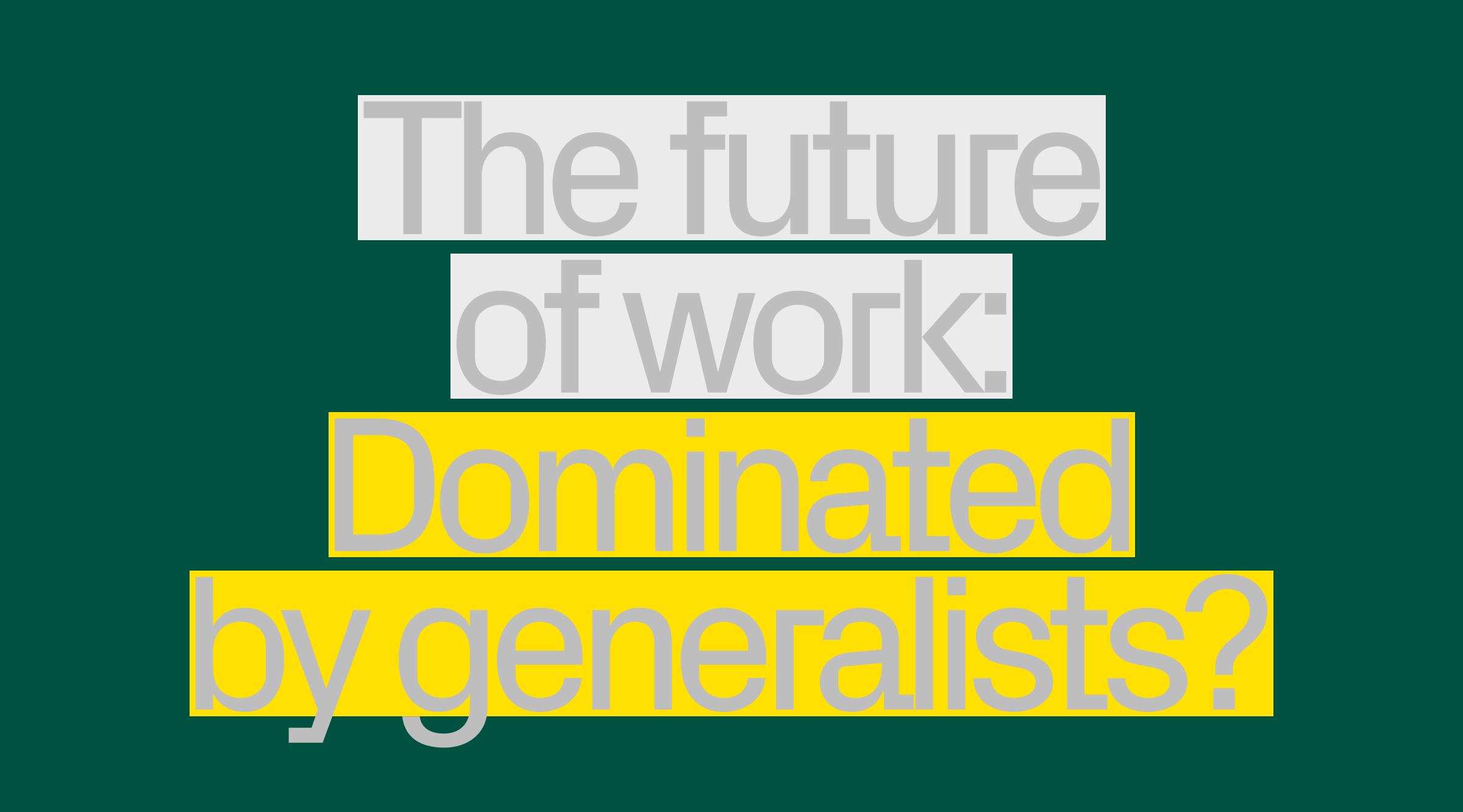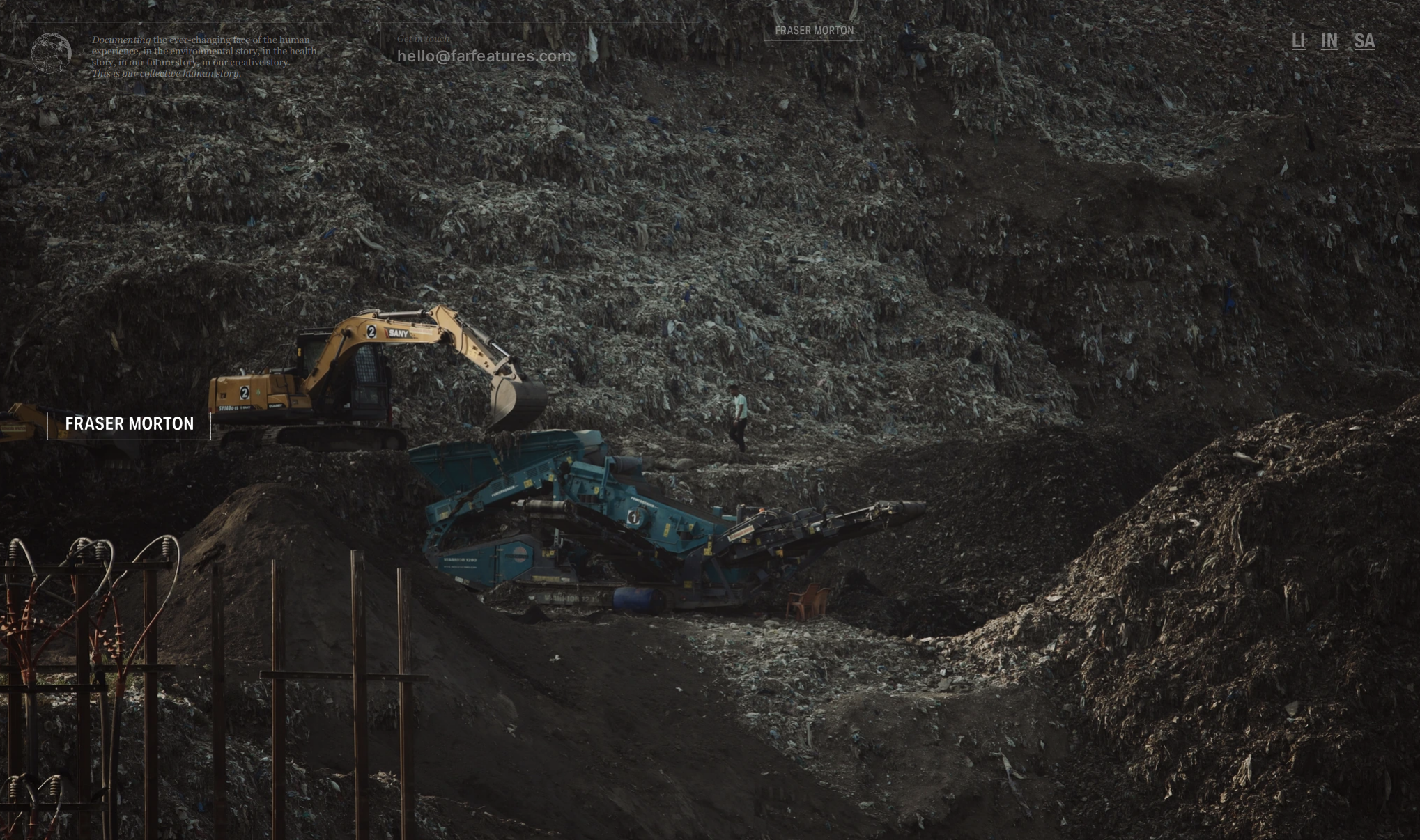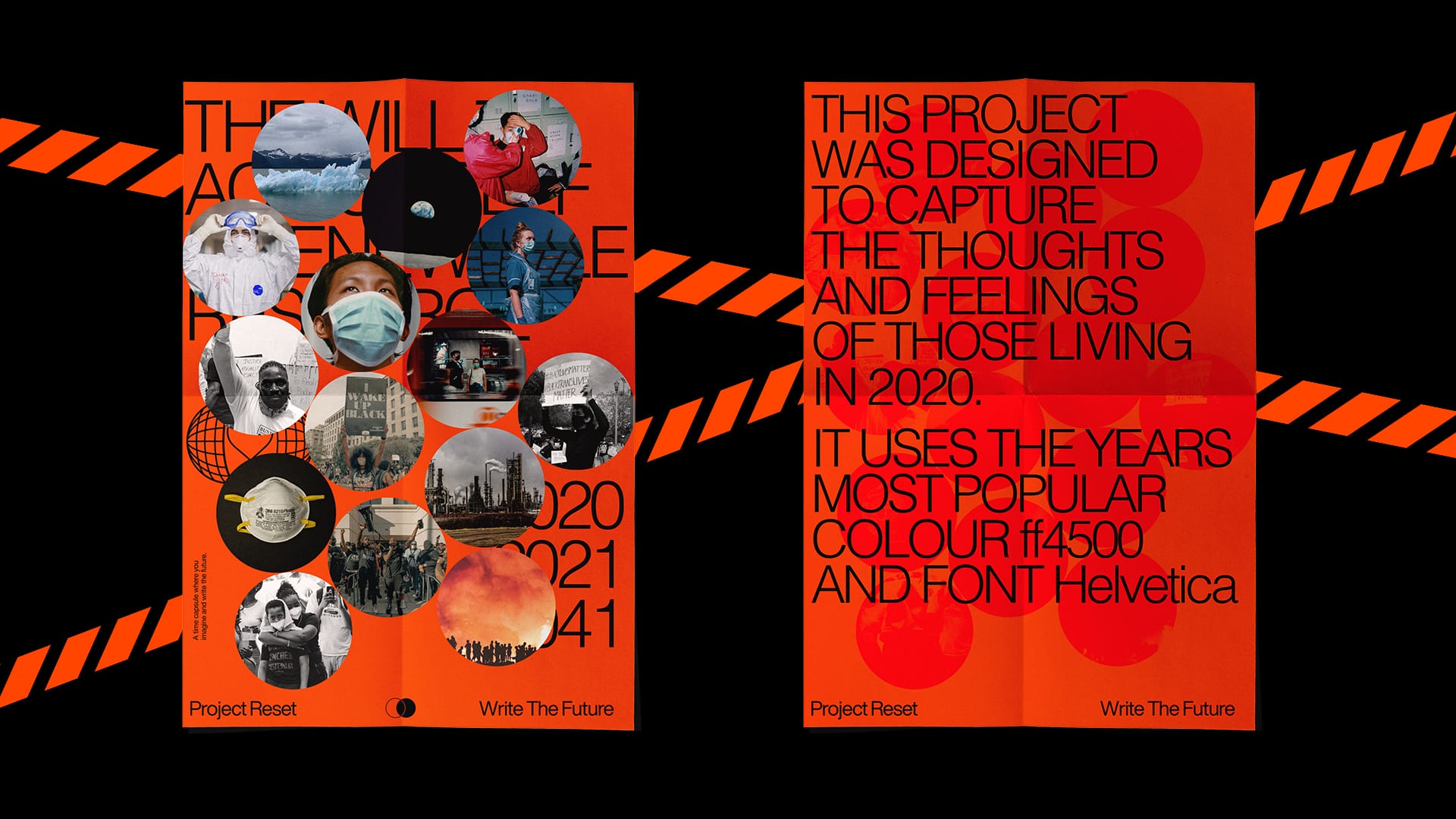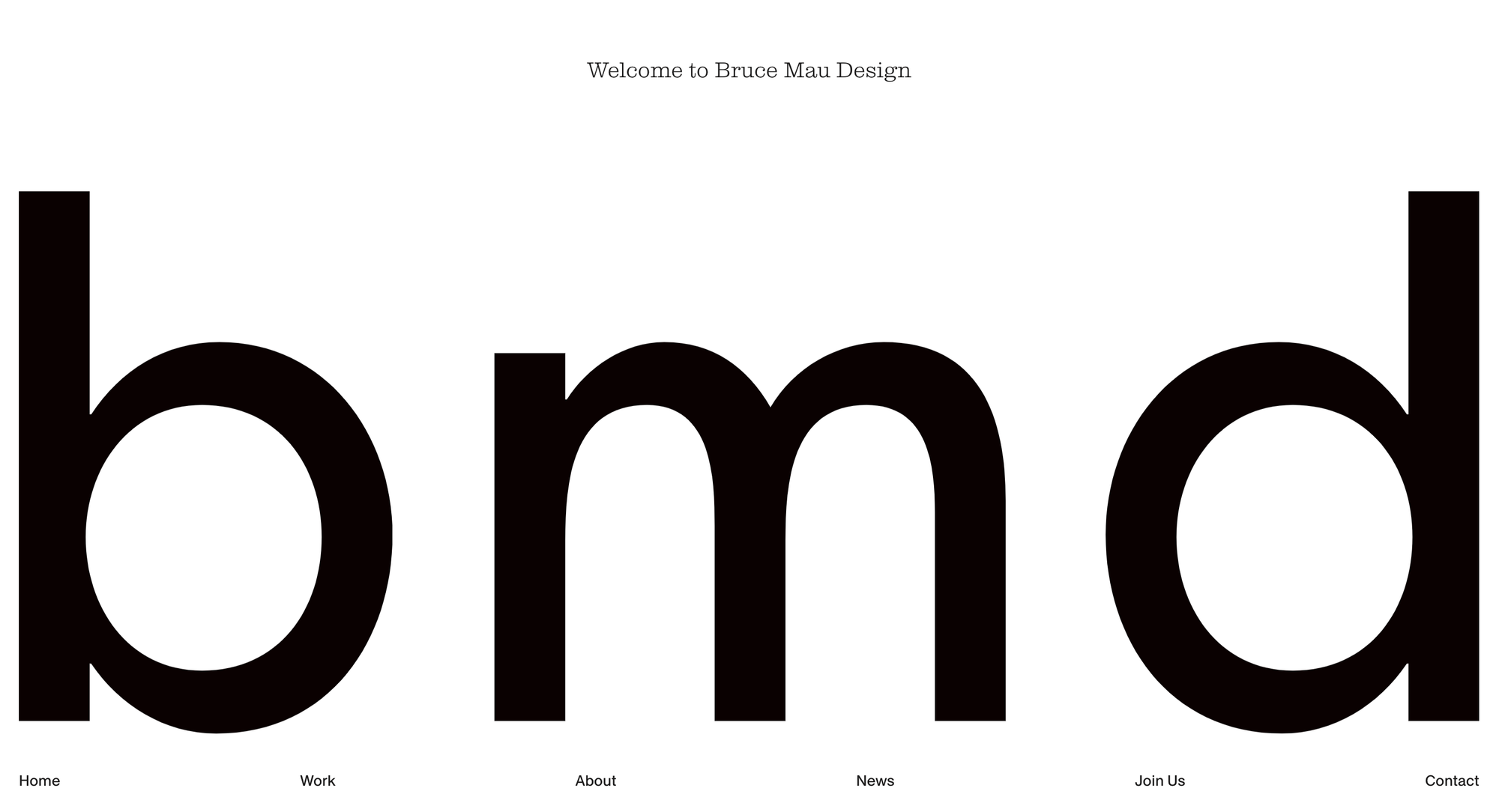The future of creative work: Why creative generalists are the architects of tomorrow
The latest in our new series on the future of creative work explores the rise of hybrid storytellers—and why there’s never been a better time to experiment.

In a world where boundaries between industries blur, creative generalists have emerged as the architects of a new era—one that is hybrid, ever-evolving, and undeniably digital. As we move deeper into the 21st century, the future belongs not to specialists tied to singular skill sets but to those who are versatile, flexible, and comfortable working across disciplines. These hybrid creators are rewriting the rules of creative work and are poised to dominate the future. But why is this the case? Let’s begin by considering the fertile landscape they now navigate: our age of limitless digital possibilities.
Words by Fraser Morton, Director of Far Features. You can follow Fraser on Instagram and Substack.
Our age of limitless digital possibilities
The arrival of the internet in the late 20th century heralded a seismic shift in how we create, consume, and distribute information. Journalism, media, and creative storytelling—confined to print, television and radio—were suddenly liberated from physical constraints. The rise and proliferation of digital platforms and social media channels meant that anyone with an internet connection could access vast amounts of information and become a storyteller in their own right. Legacy media’s monopoly over our attention and knowledge faded as new, independent, alternative, and solo storytellers rose in ever-increasing prominence worldwide. A new information landscape rose from the ashes of traditional media, creating the foundations for today’s high-velocity infosphere and global creator economy. Today, the terraforming of our information landscape is happening once again, as AI upends everything we understand about the role of journalists, designers, artists, and all of us working in the creative industries. Change is the only certainty, and the hard choice faced by many creatives is to adapt or die. A new dawn is here, driven by technology, rewriting the very nature of storytelling and authorship.
Historically, storytelling has been a deeply communal act. Ancient societies gathered around fires or in theaters, sharing myths and epics that shaped culture. The written word eventually formalized storytelling, and the advent of the printing press democratized it, allowing wider audience access to literature, news, and ideas. Fast forward to the 20th century, when radio, television, and film dominated public discourse. But it was the Internet that truly revolutionized storytelling. No longer limited by geography or time, the web enabled infinite possibilities for creative expression. From blogs to podcasts, YouTube channels to Instagram stories, the barriers to entry crumbled. The once hierarchical world of media became a sprawling network of voices, some whispering in the margins, others shouting from the center and garnering millions of new eyeballs as our infosphere fragmented and decentralized. While this explosion of platforms allowed for unprecedented creativity, it also introduced new challenges. Today’s digital space is cluttered, fragmented, and often overwhelming. The problem of too much information is real.
And so a key question we creatives need to address is:
How can we break through the noise? More importantly, how can we produce stand-out stories and art that will be seen, read, or heard at a time when everyone has the tools and distribution network to be a storyteller with global reach?
Enter the creative generalist.

The hybrid creator: master of many, jack of none
The term “generalist” has long carried a pejorative connotation—often implying someone with a breadth of knowledge but no depth. It conjures the image of a dilettante, someone dabbling in different fields but never mastering any. But today’s generalists are proving that the future is not about mastery of a single domain but about adaptability across many.
This is not to say expertise has become irrelevant, but that expertise in a narrow field is no longer enough. We are witnessing the rise of hybrid creators—those who blend skills from seemingly disparate domains to create something entirely new. Consider the graphic designer who can code, the writer who can create podcasts, the photographer who builds interactive websites or the indie journalist who makes a living on YouTube. These creators operate at the intersections of disciplines, and this fluidity gives them an edge in the digital world in our age of the creator economy.


This is the intersection where I work, collaborate, and hire freelancers with these hybrid skill sets for our multimedia productions at Far Features. We produce films, digital narratives, books, journalism projects, and experimental documentaries and have recently moved into education and selling art. Working across formats feels home to us and is where we will focus our attention in years to come while leveraging AI and new storytelling technologies and techniques. And we’re not alone. There’s a boom in hybrid creators and journalists adopting experimental attitudes to new media and production tools and creating stunning online projects.


A few recent examples I’ve admired include Rwanda Genocide and Ukraine Invasion digital narratives made recently with Readymag, and, as always, the World Press Photo’s Digital Storytelling Contest always inspires me to push the boundaries of my own work.

With so many tools now available, a key question newsrooms and indie creatives should be asking themselves at the outset of each project is: How Can We Make This Hybrid? Is there room for Virtual or Augmented Reality? How can we create a strong visual identity for this film, project, or series? Can we make a landing page or an experimental narrative? What about print or gorilla marketing? How can we leverage AI to help us?
These are basic and essential “hybrid approach” questions to ponder at the outset of a new project. I always ask them, and it invariably helps my work, expanding and pushing my creativity and opening new possibilities for better, more accessible work in our crowded infosphere.
In his book Range: Why Generalists Triumph in a Specialized World, David Epstein argues that those with broad skill sets are better positioned to succeed in complex, unpredictable environments. As our world grows more interconnected and industries overlap in unexpected ways, the ability to navigate between fields becomes a superpower. Specialists may solve specific problems more efficiently, but generalists are the ones who can connect the dots and offer innovative solutions that draw from multiple disciplines. This is a destination I believe hybrid creatives should be setting a course towards—a future career at the intersection of many disciplines unique to the individual. Niche is no longer a siloed space—it’s the hybrid intersection of skills and mediums where new creative identities are emerging and fresh, interesting work is born.
The future of work is multidisciplinary
The demand for hybrid creators is also a reflection of the changing nature of work itself. The traditional career trajectory—where one enters a profession, climbs a linear ladder, and eventually retires—has been upended. Today’s work landscape is project-based, fluid, and often non-linear. Freelancing is on the rise, and creative professionals are increasingly expected to wear multiple hats.

Consider the modern content creator or journalist. In the past, writers wrote, photographers took pictures, and designers handled layouts. But now, a single creator might be responsible for the entire package—writing, editing, designing, and marketing their content. Platforms like YouTube, Substack, and Instagram enable creators to be their own bosses, but they also require a broad set of skills to succeed. Also, in the design space, there are many examples of designers branching out, such as Tinker Hatfield, a prolific industrial designer, architect, and footwear designer (catch his work on the Netflix documentary Abstract), or Bruce Mau, who began his career as a graphic designer and then ventured into architecture, art, museums, film, eco-environmental design, education, and conceptual philosophy to create a powerful multidisciplinary approach and legacy.
This shift is not just confined to the digital world. In the realm of physical product design, companies like Apple thrive because they employ hybrid creators—designers who understand engineering, engineers who think like artists, and businesspeople who grasp creative strategy.
In closing, I’ll leave you with one of my favourite quotes about creativity and pushing boundaries from the late, great David Bowie, a hybrid creative genius if ever there was one.
Always go a little further into the water than you feel you’re capable of being in. Go a little bit out of your depth, and when you don’t feel that your feet are quite touching the bottom, you’re just about in the right place to do something exciting.
Future Of Creative Work series is written by Readymag Chief Editor Tatyana Kovalchuk and Director of Far Features Fraser Morton. In our final article in the series, Fraser will return with The future is human: Why humanistic storytelling is needed more than ever in the age of AI.